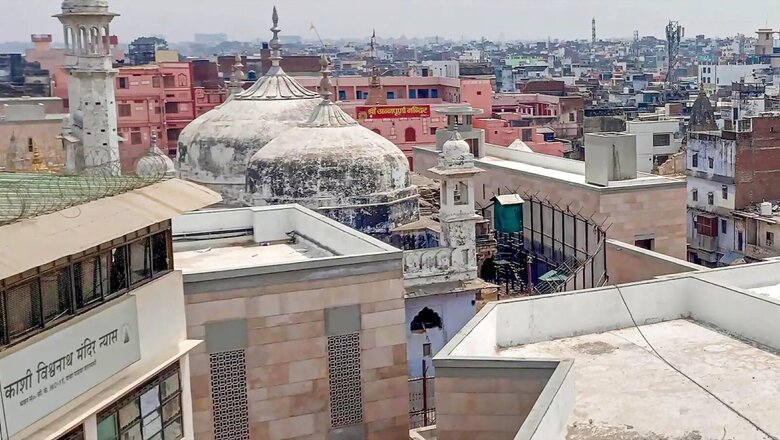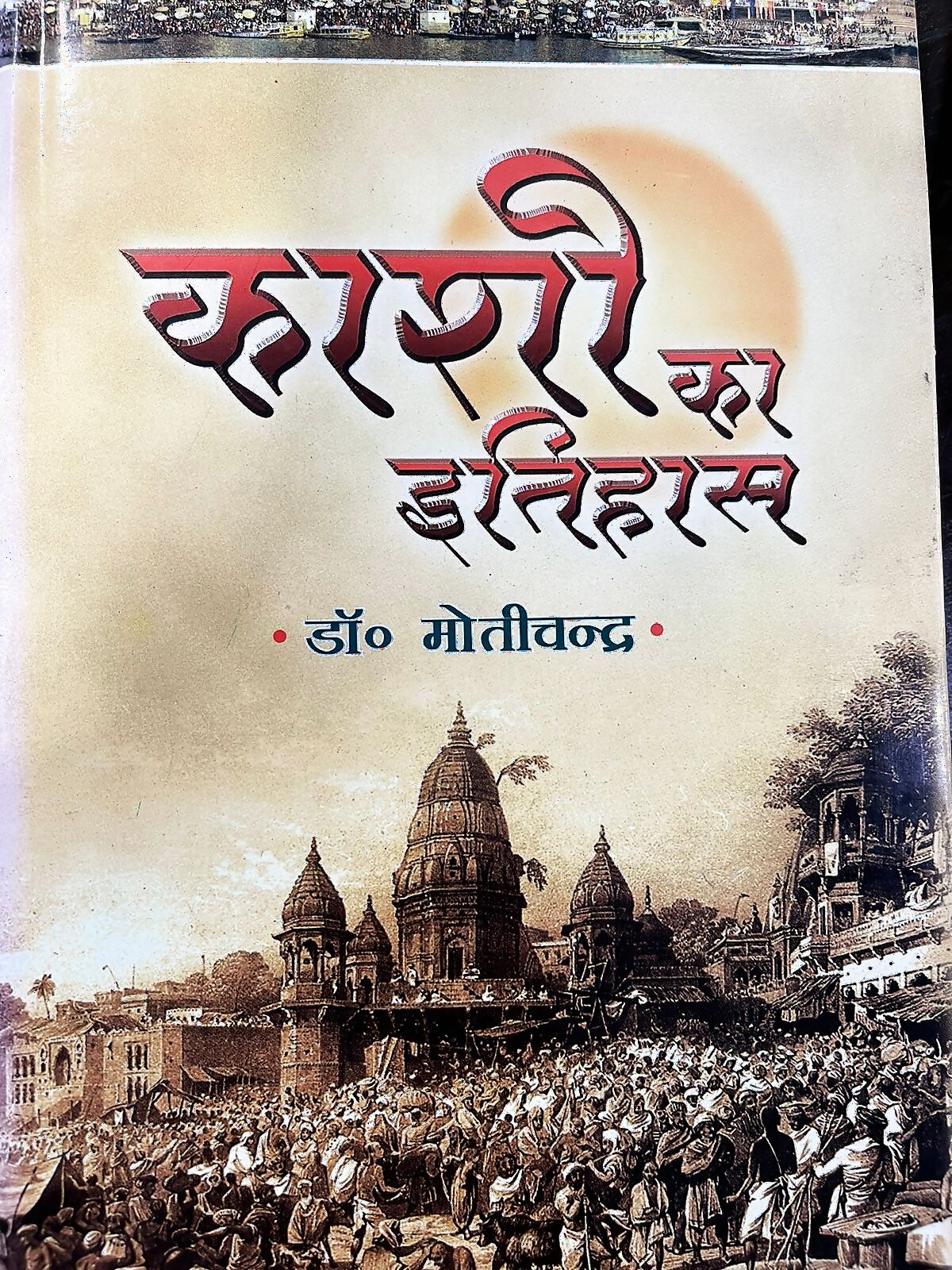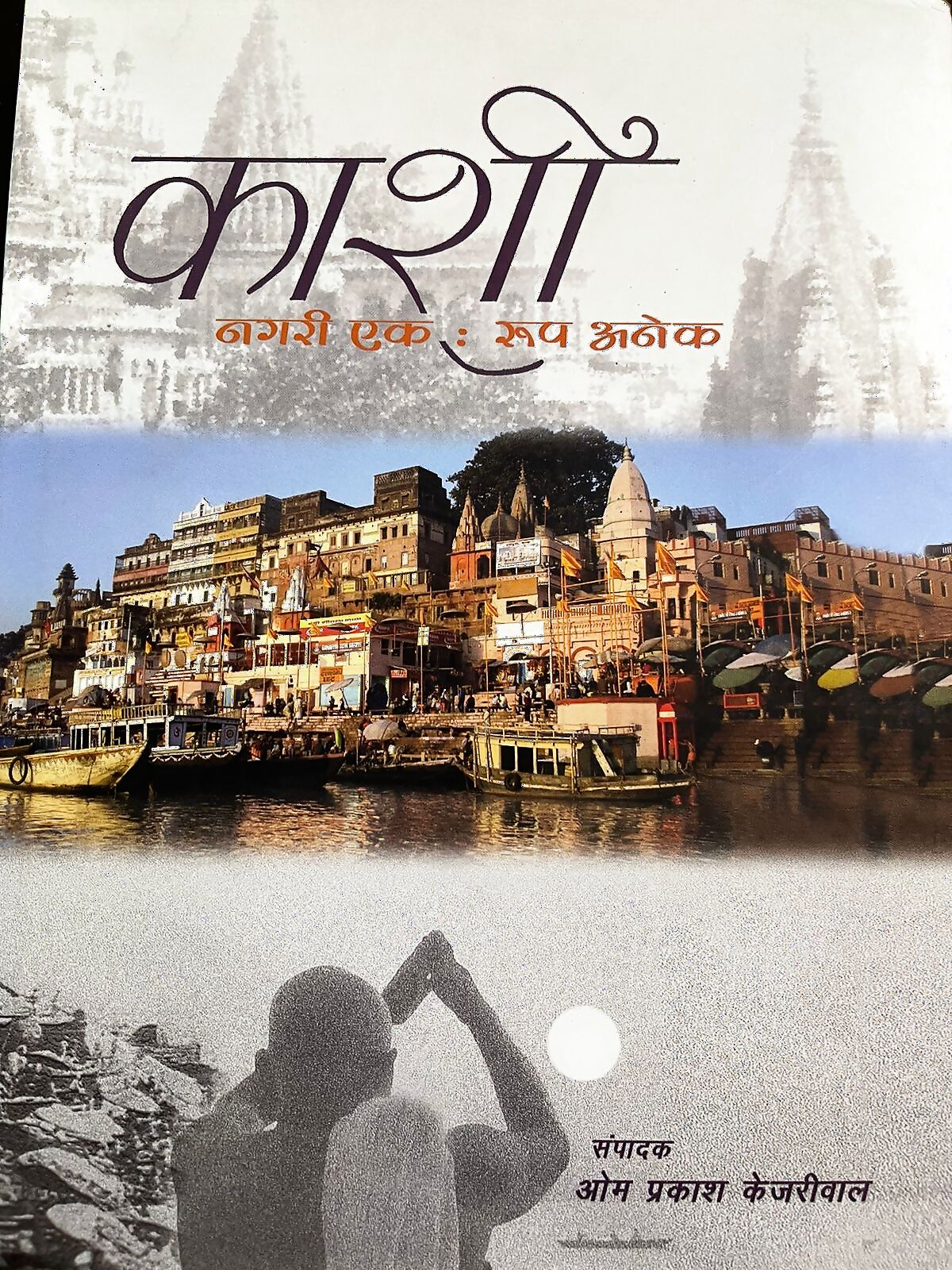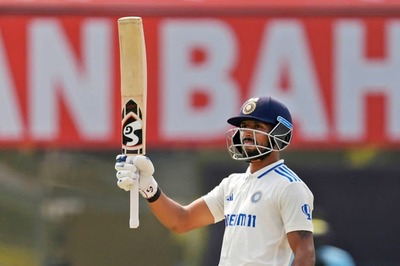From Pages of History: How Gyanvapi Mosque Was Built after Demolition of Old Kashi Vishwanath Temple

views
The controversy over the Gyanvapi mosque in Varanasi has transfixed the nation, as the matter has been argued in the district court to the Supreme Court. A court commissioner has carried out a survey at the site adjacent to the Kashi Vishwanath temple. The Hindu side says that a ‘Shivling’ has been found in a well inside the campus while the Muslims say that the object in question is part of the fountain of the bathroom (wazoo khana). The meaning of Gyanvapi is “well of knowledge” and both sides are laying their claims as per their respective analysis of the information emerging out of the survey of the campus.
The Hindu side has been saying that the mosque in the Gyanvapi campus was built after demolishing the ancient Vishwanath temple while those on the Muslim side, deviating from history, are taking shelter under the umbrella of the Indian Constitution and law, maintaining that this is a mosque and will remain one and they are not going to accept any alteration in what they believe.
But it is essential to know what medieval history says about this, especially what the court historians of that period said, when the Vishwanath temple— also known as the Vishweshwar temple— was demolished.
Qutubuddin Aibak

If you glance at history, you will find that the Vishwanath temple was demolished many times. In his famous book on the history of Varanasi, ‘Kashi ka itihas’ (The history of Kashi), author Dr Motichandra has delved into the details of the issue. According to him, during the reign of Qutubuddin Aibak, the Vishwanath temple was demolished for the first time. Aibak had captured Varanasi in the year 1194. The book ‘Kashi Nagari Ek: Roop Anek’ edited by Om Prakash Kejariwal also mentions this issue in detail. The book says that Aibak captured the city of Banaras in the battle of Asani by defeating its ruler Jaychandra.

Kejariwal’s book has a citation from ‘Taj-ul-Maasir’, a book written in Persian by Hasan Nizami: “From there (in Asani), the royal army marched towards Banaras which is the centre of Hindustan. Here the army demolished around one thousand temples and built mosques in their places”.
Dr Motichandra, who did his master’s course from BHU and earned his PhD from London University, says that the Vishwanath temple was first demolished during the reign of Aibak. In this period, many temples were replaced with mosques, or mosques were built with the debris of temples. For example, the Dhai Kangure ki Masjid that is on the route from Daranagar to Hanuman Fatak has its lower part built from the debris of Hindu temples. The northern and western side of Maqdoom Sahab’s graveyard in Gulzar locality has been built with the remnants of demolished temples. In the same way, the mosque in Bhadaun locality is built from the debris of razed temples. The courtyard of a mosque in Rajghat area has been built on the pillars from the Gahadvala era. Dr Motichandra has mentioned many such examples in his book when temples were demolished during the Sultanate period and mosques were built from their debris.
Hindu religion faced severe attacks during Qutbuddin Aibak’s reign but their intensity got reduced by the time Iltutmish assumed power. During his rule, the Hindus and the business community of that time bribed royal officers and started their religious activities once again in Kashi and in 1296 temples started coming up in the area. In the same period, the Vishwanath temple was rebuilt.
Mahmud Sharqi
But the problems for Banaras resurfaced when the Sharqi dynasty cemented itself in Jaunpur. Jaunpur was established by Firoz Shah Tughlaq in 1359-60. But in this very Jaunpur an independent Sultanate was set up by Khwajah-i-Jahan Malik Sarwar who broke away from Nasiruddin Muhammad Tughluq. Mahmud Sharqi, a descendent of Malik Sarwar who became an independent ruler from a wazir, once again started demolishing temples in Banaras during his reign from 1436 to 1458. The Vishwanath temple was also once again razed in this period.
Around 125 years after the second demolition, the temple was again rebuilt. The credit this time goes to Raja Todarmal’s son Gobardhan Das. Todarmal was a courtier of Akbar and he is believed to have put in place a robust revenue system. According to Dr Motichandra, around 1585, upon orders from his father, Gobardhan Das rebuilt the Vishwanath temple. It is said that in 1580, after a battle victory in Munger, Narayan Bhatt, Todarmal’s mentor, advised him to rebuild the Vishwanath temple. Bhatt was a great scholar from southern India and had spent a considerable amount of time in Kashi.
Dr Motichandra writes: “There were five pavilions in the ancient Vishwanath temple. The fifth pavilion in the east measured 125×35 feet which was used for religious preaching. Todarmal got the temple rebuilt and the base of the temple was raised by seven feet and thus was brought to the level of the road. But fearing retribution from Muslims, the statues were not excavated at that time. In the Vishwanath temple, which was built in the 16th century, each arm of its square measured 124 feet. In the middle of the main temple was a 32 feet square which was placed in a pond. The four anterooms adjacent to the sanctum sanctorum measured 16×10 feet. After this, there were small anterooms measuring 12×8 feet that joined the four pavilions. The east and the west pavilions had temples of Dandapani and guards (dwarpal). On the four corners of the temple, there were small temples measuring 12 feet each. The Nandi pavilion was outside the temple. The height of the temple was perhaps 128 feet. There were spires on the top of the pavilion and temples which were, as per one estimate, 64 and 48 feet in height. There was a corridor around the temple which had innumerable temples of various gods and goddesses”.
Aurangzeb
The Vishwanath temple that Gobardhan Das and Narayan Bhatt got rebuilt as per the wishes of Todarmal bore the brunt of the bigotry of Aurangzeb within just nine decades. In 1658, after Shahjahan fell ill, all his four sons started fighting to take control of the empire. Ultimately, Aurangzeb managed to access the throne after defeating his brothers Shuja and Dara. The initial years of his reign were marked by great instability; most people hated Aurangzeb. On the one hand, he had captured the throne while his father was still alive, had made his father Shahjahan a captive, and on the other hand, he had brutally killed his brothers. So, during the initial eight to 10 years of Aurangzeb’s reign, his bigotry was not on full display. On the contrary, to rebuild his image, in many places he gave land to build temples and handed over special personal leases of huge chunks of land to mahants. But this was just a facade. Within a decade of capturing power, his cruel face was before the world to see.
Aurangzeb’s contemporary historian Saqi Musta’idd Khan has written about the ruler’s intolerance in his book ‘Maasir-I-Alamgiri’, and quoting this Dr Motichandra writes in his book: “On 17 jilqda, hijri 1079 (18 April 1669) the emperor learnt that in the provinces of Thatta and Multan, and especially in Banaras, the stupid Brahmins teach their worthless book in schools and both Hindu and Muslim students come to these schools from far off areas to acquire this satanic knowledge. Upon hearing this, the emperor, the preserver of the religion, issued an order to the subedars to demolish all the schools and temples of the non-believers. They were given strict orders to stop all types of idol worship and teachings of related religious texts. On 15 Rabi-ul-Akhir (2 September 1669), the emperor came to know that following his orders, his staff had demolished the Vishwanath temple in Banaras”.
As per Dr Motichandra, it’s not that only the Vishwanath temple was demolished, but the Gyanvapi mosque was also erected on the debris of this temple. Those who built the mosque demolished the western wall of the old temple and small temples were razed to the ground. The western, northern, and southern gates were closed and the spires on the gateways were pulled down and a dome replaced those spires. The sanctum sanctorum was now converted into the main courtyard of the mosque. All the four anterooms were saved and joining them with pavilions, hallways were carved out from a 24 feet square. The eastern side of the temple was demolished and converted into a courtyard that has old pillars still standing. The eastern pavilion of the temple, which measured 125×35 feet, was fitted with a stone square and was given the shape of a long square.
The same Aurangzeb who demolished the Vishwanath temple and raised the Gyanvapi mosque on it is hailed as an able Islamic administrator by some fanatic groups and there is a section of historians that tries its best not to shed any light on his bigotry and shamefully attempts to tell his story in a different way. Famous freedom fighter and Congress stalwart Dr Pattabhi Sitaramayya has included such a mischief in his famous book ‘Feathers and Stones’. Citing it, Omprakash Kejariwal writes: “When he was at the peak of his popularity, Aurangzeb, like any western ruler, when he set about for his journey, used to have huge numbers of Hindu courtiers in his entourage. Once all these courtiers went out to visit the (Vishwanath) temple in Banaras. They also had the queen of Kutch in their group. When they all came out of the temple after having darshan, they learnt that the queen was missing. They searched her everywhere but she was not found. Ultimately they searched for her more carefully, they came to know about a basement below a two-storey building of a temple which had its doors locked from inside. When they entered the basement after breaking the doors, they found the queen disrobed and shaking with fear. Later they came to know that the mahanths of that place brought rich and bejewelled visitors to this basement on some pretext and they used to rob them of their valuables. It was not known what they did with their lives. But whatever may be the case, the search for this was instant and intense and this did not give much time for any crime to be committed. When Aurangzeb came to know about this act of priests, he said – ‘A place where such looting takes place cannot be the abode of gods’. He immediately ordered the demolition of the place. The order was carried out immediately and the temple was razed to the ground in no time. Later, the queen, who was saved, wished that a mosque be erected in the place where the temple stood earlier and her wishes were fulfilled”.
The acceptance of demolishing the Vishwanath temple, erecting a mosque in its place, and then disgracefully inventing a story of the Kutch queen to justify the whole thing indicates the presence of the same mentality which tries to hide or justify the bigotry of the medieval Muslim rulers and emperors and their atrocities on their Hindu subjects.
Sitaramayya has accepted in his book that the Muslim person who narrated this story could not provide any proof in support of his narrative and this was merely hearsay.
As far as history is concerned, the fact is that the contemporary ruler of Kutch, Maharao Tamachi, had sheltered Dara Shukoh with whom Aurangzeb was fighting a fierce battle to capture the throne. The garden in which Rao Tamachi had sheltered Dara Shukoh in the Bhuj city of Kutch in 1659 is famous even now as Darawadi. In such a situation, it is not possible that Aurangzeb would allow the queen to be part of his entourage for pilgrimage when her kingdom had sheltered his brother with whom he was fighting a bitter battle to usurp the throne. It is unthinkable that the queen on her pilgrimage to the holiest city of Hindus would ask for the most important temple of that place to be demolished and a mosque built instead.
Krutarthsinh Jadeja, who is a well-known scholar of Kutch history and also related to the Maharao dynasty, says that the history of Kutch does not record any such incident that a queen of Kutch accompanied Aurangzeb on a pilgrimage to Banaras and there is no question of her urging him to build a mosque on the same place where a temple had existed. Krutarthsinh says that Kutch was so geographically alienated that it was not possible to make a pilgrimage to a nearby place Dwarka and going to Banaras was unthinkable. He adds that in 1669, when the Vishwanath temple was demolished on the orders of Aurangzeb, Rao Rayadhanji I was the ruler and not Rao Tamachi and there is no record of his queen travelling to Banaras in any historical document or royal order. According to him, almost 150 years after the rule of Rao Raydhanji I, Maharao Deshalji II ruled from 1819 to 1860. His queen had reached Dwarka on pilgrimage after a lot of difficulties. But by the time she reached there, the sea level had risen, and she could not enter the temple to have darshan of Lord Krishna and had to be content after seeing the flag of the temple. When this was the condition of a pilgrimage place that was so close to Kutch, there was no question of a queen visiting Banaras.
Revival
However, after the reign of Aurangzeb, the Mughal rule kept on declining and Maratha power was on the ascendency during which time once again the efforts to rebuild the temple started. The rulers of Reewa and Mewar and Nana Fadnavis also joined in. But, finally, the credit for rebuilding this temple went to Ahilyabai Holkar, the queen of Indore. The staunch nationalist and religious Ahilyabai purchased land in the area of Gyanvapi and took permission to rebuild the temple from the Nawab of Awadh. In 1777, on the day of Janmashtami, the Vishwanath temple was reestablished.
As per the book Kashi Granth, edited by Om Prakash Kejariwal, the Brahmins were terrified due to the atrocities perpetrated on them during the Sultanate and Mughal period and they kept themselves away from any part of the rebuilding of the Vishwanath temple by Ahilyabai Holkar. In such a scenario, Ahilyabai had to bring a priest from her own capital Maheshwar for the Pran Pratishtha ceremony. The first priest of this temple was a Bhoomihar Brahmin of Tarapur area. The sanctum sanctorum of the temple was exactly the same as it was in ancient times.
Maharaja Ranajit Singh of Punjab donated gold for the decoration of the two spires of the temple. He had donated around 821 kg of gold in 1839. Later many people contributed to the development of this temple. In 2014, after Narendra Modi won elections from the Varanasi parliamentary seat and became Prime Minister, the development of Kashi Vishwanath temple took a new turn and it has now become a grand place. In the last few years, the adjoining area of the temple has been redeveloped and this has added to its splendour. A Vishwanath Corridor has been created and this has resulted in a greater influx of tourists and devotees from the country and abroad.
But the Gyanvapi mosque, which has been built after demolishing the old temple, has left a deep wound that is still raw. The matter is in court. So, in this light, when the latest survey of the site has been concluded, many traces of the old Vishwanath temple have resurfaced. As is evident, those on the Muslim side are also very combative about this issue because they know that if the restoration work of old temples that were replaced by mosques is started, then thousands of such temples will be reestablished that were razed during the 800-year-long Muslim rule in the country, with evidences of that strewn all over. Gyanvapi is just a famous example of this!
Read all the Latest India News here




















Comments
0 comment